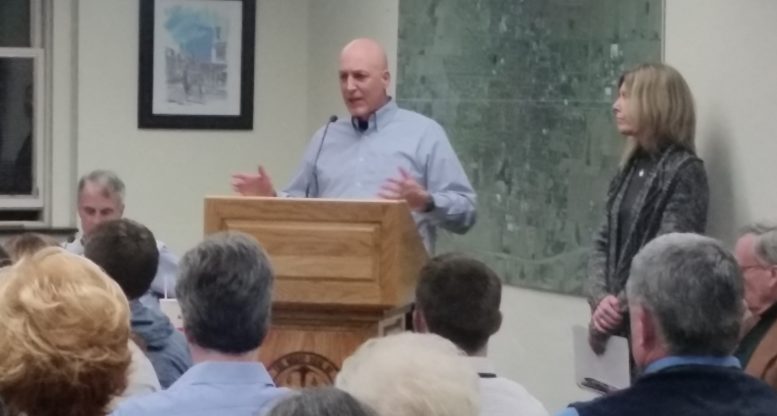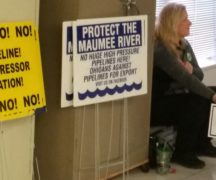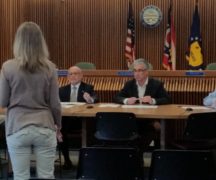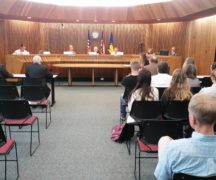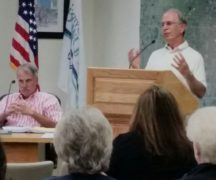By JAN LARSON McLAUGHLIN
BG Independent News
Bowling Green officials would like to dig into the facts around the Nexus pipeline but have no interest getting tangled in a lawsuit. City council was presented with some unsettling scientific information Monday evening, and was asked to file a motion to intervene with the Federal Energy Regulatory Commission – which is on the edge of approving the pipeline plans.
“We still have the right to insist that the dangerous situation at the pipeline river crossing be fully analyzed,” Lisa Kochheiser, of Bowling Green, said to council. “Time is of the essence here.”
A grassroots group opposed to the Nexus pipeline as it crosses Wood County has worked with a Bowling Green State University professor who is a geologist and environmental policy expert.
Based on the information found by Dr. Andrew Kear, the group filed a formal motion to intervene with FERC.
Kear spoke directly to city council. “I’m not an advocate against natural gas,” he said, noting his appreciation for hot showers. However, the route of the Nexus pipeline, “poses unnerving public health and safety risks.”
The initial report submitted to FERC said the Bowling Green Fault Line is deep below the surface, so it is not a concern. However, the fault is so close to the surface that it is visible in places, and is even pointed out by a marker in Farnsworth Park on the other side of the Maumee River.
“The pipeline crosses the fault right near the Bowling Green drinking water supply,” Kear said. While the fault line is not active, drilling and lubrication can cause earthquakes, like those in the Youngstown area, he said.
The pipeline would be 700 feet from the water plant and a quarter mile from an active blasting quarry on the Waterville side of the river. Also, little research has been done on the suspected karst geology in the area which should be avoided by pipelines.
“They screwed up horribly,” said Terry Lodge, the attorney who filed the objections on behalf of local residents. “Now is the time for the science to be seriously indulged and engaged.”
And the city would have a legitimate reason to question the pipeline plans, he added. “You certainly have a very serious dog in this fight.”
Having a city get into the battle on behalf of its water plant would give the concerns more credence, Lodge said. “FERC might hear a little bit better.”
“They should take a hard look at this location and see if they can find a better one,” Kear said, noting that an alternate route was proposed but it was 41 miles longer.
Council member Bruce Jeffers inquired about the value of Bowling Green getting involved in the fight – especially since FERC is quite close to the final approval process.
“It’s worth the effort to try,” Kear said.
Council member Sandy Rowland said this latest information brought up some concerns.
“I’m not a scientist, but I am a city council member who cares about water for our citizens,” Rowland said. She suggested that council take some action, “To assure our residents, our taxpayers, our neighbors and our businesses that we will have safe water.”
Council member Daniel Gordon also weighed in. “Dr. Kear knows his stuff,” he said. And the fact that Kear’s report finds “a credible threat to health and safety,” should cause council to consider action. “At least then we did what we could.”
Rowland said she has no interest in the city filing any formal action – but asked that Kears discuss his findings with City Utilities Director Brian O’Connell. “Do we have a water safety issue for the city of Bowling Green?” she asked.
Mayor Dick Edwards agreed. He has already sent letters about the pipeline to Spectra Energy, U.S. senators Sherrod Brown and Rob Portman, and U.S. Rep. Bob Latta.
“I’m interested in the science,” not the politics, Edwards said.

